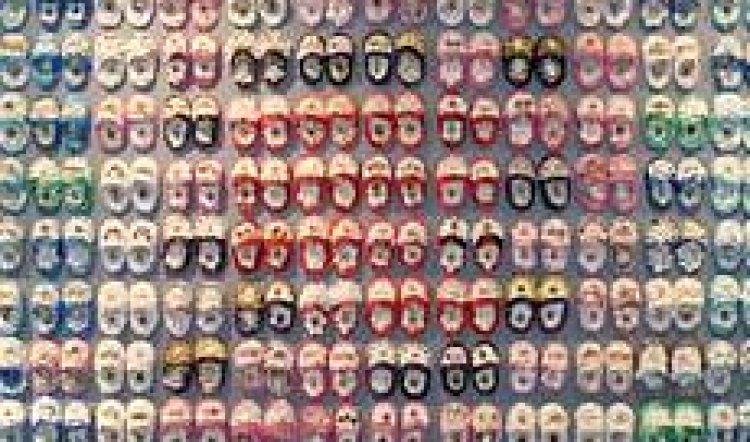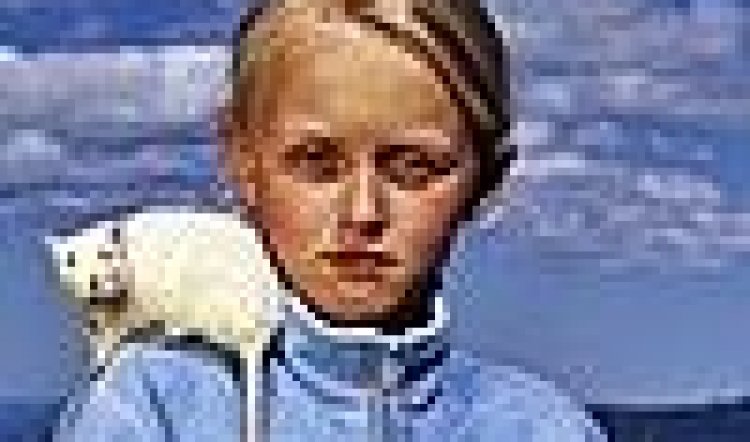
THREE TO SEE
THREE shows currently running in galleries in outer Sydney offer a strong riposte to the view that exhibitions which arise from a particular community of interest may be worthy but have limited appeal outside that community.
The recently reopened, refurbished Casula Powerhouse in South West Sydney has a reputation for shows that reflect its own community while still having wider relevance. Perhaps best known is its Vietnam Voices of some years ago, which toured widely and found audiences equally among Australian veterans of that controversial conflict and survivors in the Australian Vietnamese community.
Casula is currently home to one of the most original and diverting shows in a long time. Local Portraits is a community-derived show with a difference, combining portrait photography with sound delivered through an MP3 player, the use of which is free to visitors. The show is a collaboration between composer and popular ABC Radio National broadcaster Andrew Ford (The Music Show), and American-Australian photographer Jim Rolon. It comprises portraits of 70 people from the suburbs of Miller and Robertson (Southern Highlands), mostly black and white with some colour, and sound bites based on interviews conducted by Ford. People talk about their favourite piece of music, part or all of which is played on each track.
The music runs the gamut from Puccini to Dylan, East Timorese folk songs to Snoop Dogg, Glenn Miller to Grinspoon, Bowie to Beethoven. There are some clues to social status in many of the portraits, but they are not always a predictable guide to the choice of music. Fred Schuler, an insomniac shift worker, heard the Emperor Concerto on ABC Radio, found it soothing, and became “obsessed” with it, attending numerous concerts and collecting many different recordings. Steve Williams loves Madam Butterfly because although he has never seen an opera and can’t speak Italian, “you can hear the emotion through the music.”
Kate Nicholas, who spent much of her youth “in homes” identifies strongly with Elvis Presley’s In the Ghetto. Celeste Coucke loves Noel Coward’s Room with a View because it reminds her of her grandmother. Young Jessica Farr thinks her father Darren’s choice (The Beatles) is old hat and prefers Thirsty Merc.
Slim Dusty is a popular selection, appearing more than once. Ron Hird related to Dusty’s The Lights on the Hill during his truckie days, and likes his use of “country” language. “When you go from the country to the city, even though they speak English they don’t speak Australian half the time,” he comments.
The only “name” that would be known to outsiders among the portraits is English actress Miriam Margolyes (her pick: Schubert’s Trout Quintet), who has a home in the area since she appeared in the film Babe which was shot near Robertson.
Among so many portrait photographs it’s not surprising that the quality varies from insightful to fairly bland, but the standouts for me were those of children, which at their best captured both the optimism and the wistfulness of childhood. There has been an interesting effort to diversify the framing – ranging from plain and simple to gilded and elaborate – so that the overall effect is rather like a collection in someone’s home, framed in different eras.
This delightful show requires at least a couple of hours to do it justice.
A short distance away by M5, Campbelltown Arts Centre is showing another wonderfully eclectic exhibition, Ngadhu, Ngulili, Ngeaninyagu: A Personal History of Aboriginal Art in the Premier State (NSW) by distinguished curator Djon Mundine. Four of the most striking works are in the soaring gallery foyer, two of these reflecting the long tradition of work produced for tourists by the Aboriginal community at La Perouse: a collection of boomerangs – many contemporary, by Laddie Timbery - arranged on a stark white wall, adjoining some of Esme Timbery’s exquisitely painstaking assemblages of shell and fabric Harbour Bridges. Another work by Esme, commissioned for this show, comprises a jewel-like grid of tiny baby shoes in rainbow colours, adorned with shells, glitter and lace. It is beautiful and moving – the subtext of stolen children and images of the Holocaust is unavoidable. Covering an entire wall at the end of the foyer is a large installation by Brook Andrew, featuring a stark black and white pattern drawn from traditional body painting, oddly punctuated by taxidermy native birds on perches.

Other works on show include early post-colonisation efforts (Mickey of Ulladulla), Kevin Gilbert’s prison-made linocuts, the tough naive paintings of Robert Campbell Jr, Ray Kennedy and HJ Wedge, and younger urban artists who emerged through Boomalli (Bronwyn Bancroft, Michael Riley et al), and recent work by Karla Dickens (Nowhere Here, using provocative word play) and Frances Belle Parker (an installation of 10,000 clothes pegs in the shape of an island in Northern NSW), as well as video work by Riley, Andrew and Darlene Johnson.
Gordon Syron’s Judgement by His Peers (1978), shows a courtroom in which everyone except the defendant is black, a message which has given this painting iconic status in Aboriginal art of the 20th century.
On the other side of the Cumberland Plain at the Penrith Regional Gallery is another show born out of a specific community, in this case the substantial Samoan community of Western Sydney. There are more than 60,000 people of Samoan descent in Australia yet it’s fair to say that few non-Samoans would be aware of the strength and longevity of their culture and customs, or would be aware of their complex history.
Strictly Samoan, curated by Victoria Harbutt assisted by Lalau Leo Tanoi, falls into three distinct but related parts. Aussie Aiga is a joyful collection of family portraits by Greg Semu; Samoa Mo Samoa: the Story of the Mau, comprises archival material and photographs telling the story of Samoa, the first Pacific nation to throw off its colonial shackles; and ‘Ie (sic) Toga: a collection of toga,exquisite, finely woven pandanus textiles whose uses range from the utilitarian to the highly ceremonial.
All three shows are accompanied by attractive, accessible and informative catalogues. The Casula one includes an audio CD and reproductions of the portraits.
Arts NSW supported all three exhibitions. With the current chaotic situation of arts funding in the State – the rise of a new and inexperienced arts bureaucracy and the apparent decline of the longstanding principle of peer assessment – one can only fear for the future of similar landmark shows.
Local Portraits: Casula Powerhouse until 18 January; Ngadhu, Ngulili, Ngeaninyagu: A Personal History of Aboriginal Art in the Premier State: Campbelltown Arts Centre until 28 October; Strictly Samoan: Penrith Regional Gallery and Lewers Bequest until 2 November



